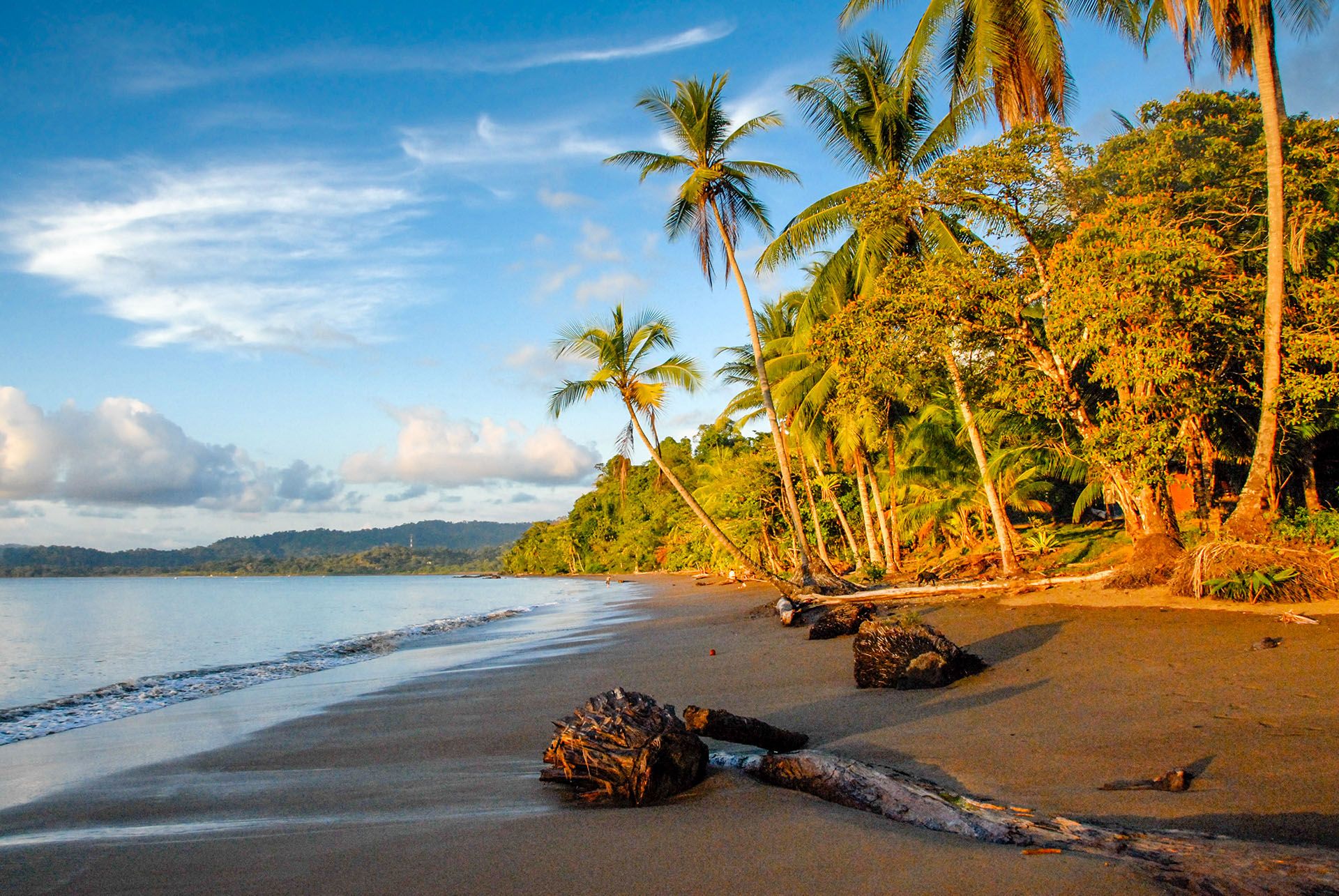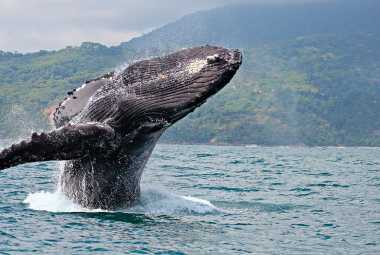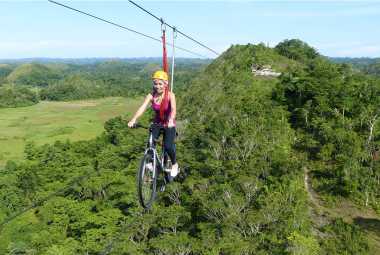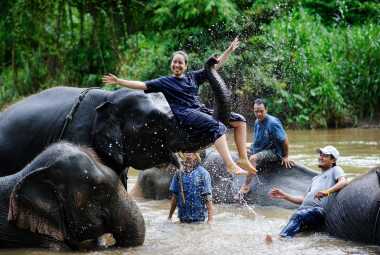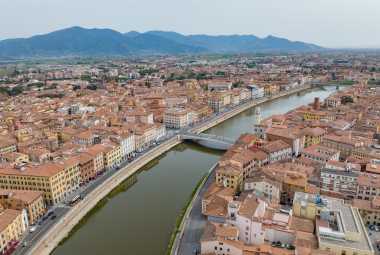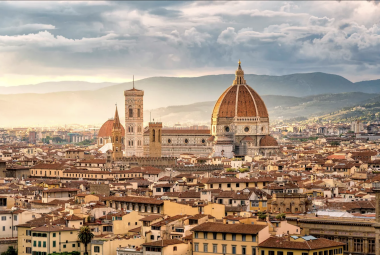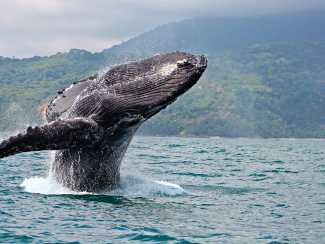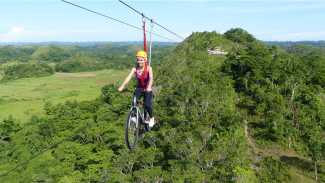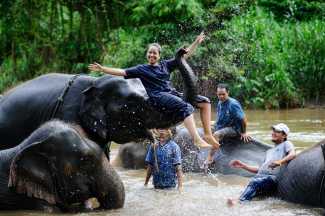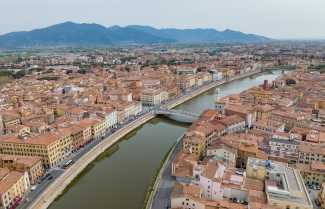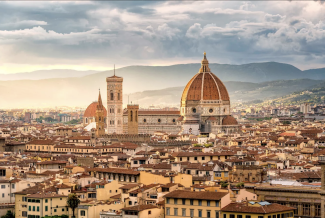Image by roughguides.com
*Vacation Mode is a for-profit site. It contains paid banner advertisements that are generated and managed by a third-party network. This site also includes relevant affiliate links (both in the content and on the sidebar) all of which we do our best to clearly mark as such.
Quick Summary
- Planning for Costa Rica in July: The article offers insights into weather, climate, activities, and travel tips for visiting Costa Rica in July.
- Weather in July: July is the peak rainy season in Costa Rica, marked by high humidity and frequent precipitation. Temperatures range from 70°F to 85°F. Daily afternoon showers and heavy downpours are common, particularly on the Caribbean coast, Tortuguero, and the South Pacific.
- Climate of Costa Rica: The country has a tropical climate with warm temperatures and high humidity throughout the year, leading to diverse microclimates across different regions. The climate supports lush rainforests, diverse ecosystems, and abundant wildlife.
- Rainy and Dry Seasons: Costa Rica's rainy season runs from May to November, with July being part of this wet period. The dry season, from December to April, is ideal for outdoor activities.
- Regions in Costa Rica: Highlights include the Pacific Coast (Manuel Antonio National Park), the Caribbean coast (Tortuguero), and the Central Valley (coffee plantations). Each region offers unique experiences and activities.
- Average Temperature in July: Varies slightly between the Pacific and Caribbean coasts, maintaining warm and humid conditions typical of a tropical climate.
- Activities in July: Offers opportunities for zip-lining, snorkeling, hiking in Manuel Antonio National Park, exploring Arenal Volcano, and wildlife spotting in Monteverde Cloud Forest Reserve. July's rain enhances the lush landscape, making it ideal for nature and adventure enthusiasts.
- Best Places to Visit in July: Manuel Antonio for beaches and wildlife, Arenal Volcano for hot springs and adventure activities, and Monteverde Cloud Forest Reserve for its unique biodiversity and cloud forest exploration.
- Packing Tips for July: Recommend lightweight, breathable clothing, rain gear, sun protection, and insect repellent to navigate the rainy season comfortably.
- Safety Precautions: Advises being aware of weather conditions, avoiding flash flood areas, staying hydrated, and taking general travel safety measures to ensure a smooth and secure trip.
- Frequently Asked Questions: Addresses common queries about weather, activities, festivals, and health precautions for travelers considering Costa Rica in July.
Are you planning a trip to Costa Rica in July? Curious about the weather, climate, and best activities to do during this time of year? Look no further!
In this article, we will explore the average temperature in Costa Rica in July, the different regions of the country, the rainy and dry seasons, and the best places to visit. We will also provide tips on what to pack and safety precautions to keep in mind for your trip.
So, let's dive in and discover all you need to know about traveling to Costa Rica in July!
What is the Weather in Costa Rica in July?
Costa Rica experiences its peak rainy season in July, with tropical weather prevailing throughout the country. The climate in July is characterized by high humidity levels and frequent precipitation, making it a wet month for travelers.
Travelers visiting Costa Rica in July should be prepared for daily afternoon showers and potential heavy downpours in various regions like the Caribbean coast, Tortuguero, and the South Pacific. Temperatures generally range between 70°F to 85°F, providing a warm and humid environment. The lush green landscapes are at their most vibrant during this period, but it's advisable to pack waterproof gear and plan outdoor activities accordingly to make the most of your trip despite the rainy conditions.
What is the Climate of Costa Rica?
Costa Rica boasts a tropical climate, characterized by warm temperatures, high humidity levels, and significant precipitation. The country's climate is influenced by its diverse topography and proximity to the equator, providing varied microclimates across different regions.
This unique climate creates a haven for lush rainforests, diverse ecosystems, and an abundance of wildlife that call Costa Rica home. The temperature variations between the coastal lowlands and the highland areas play a vital role in shaping the country's rich biodiversity.
The rainy season, typically from May to November, brings heavy downpours that nourish the flora and fauna, while the dry season from December to April offers ideal conditions for activities like hiking, surfing, and exploring the vibrant coral reefs along the coastline.
What are the Different Regions in Costa Rica?
Costa Rica is renowned for its diverse regions, each offering unique experiences for travelers. From the lush rainforests of Arenal to the stunning beaches of Tamarindo and the bustling capital of San Jose, the country is a playground for nature lovers, adventure seekers, and eco-tourism enthusiasts alike.
In the Pacific Coast region, areas like Manuel Antonio National Park are popular for their combination of white sand beaches and dense rainforests teeming with wildlife. Visitors can enjoy activities such as zip-lining, surfing, and exploring mangrove swamps.
Moving towards the Caribbean coast, places like Tortuguero boast prime sea turtle nesting sites, ideal for wildlife enthusiasts. The Monteverde Cloud Forest Reserve in the highlands provides a unique opportunity for cloud forest exploration and birdwatching.
In the Central Valley, coffee plantation tours offer insights into Costa Rica's rich coffee culture, complementing the region's vibrant urban life.
What is the Average Temperature in Costa Rica in July?
In July, Costa Rica experiences average temperatures ranging from X to Y degrees Celsius, varying slightly between the Pacific coast and the Caribbean coast. The tropical climate ensures warm and humid conditions across the country during this month.
On the Pacific coast, temperatures typically range between A and B degrees Celsius, while on the Caribbean coast, temperatures may fall within a range of C to D degrees Celsius. These variations are influenced by factors such as elevation, proximity to the ocean, and prevailing winds.
Travelers can expect more consistent warmth on the Pacific coast, perfect for sunbathing and enjoying water activities, while the Caribbean coast may experience occasional rain showers due to its proximity to the Caribbean Sea.
What are the Rainy and Dry Seasons in Costa Rica?
Costa Rica experiences distinct rainy and dry seasons throughout the year, with July falling within the peak rainy season. The dry season typically spans from December to April, offering more sunshine and ideal beach weather, particularly on the Pacific coast.
During the rainy season, which usually lasts from May to November, the country receives most of its annual rainfall, leading to lush green landscapes and vibrant flora. The Pacific coast generally experiences a drier rainy season compared to the Caribbean coast, where rainfall is more evenly distributed throughout the year.
The rainy season can impact outdoor activities and tourism, with some attractions closing or experiencing limited accessibility. In contrast, the dry season attracts a higher number of visitors seeking clear skies and warm temperatures for activities like surfing, hiking, and wildlife spotting.
What Activities are Best to Do in Costa Rica in July?
July in Costa Rica offers a plethora of activities for travelers seeking adventure, nature exploration, and wildlife encounters. From zip-lining through rainforests to snorkeling in crystal-clear waters, the country is a paradise for eco-tourism enthusiasts and outdoor enthusiasts.
Explore the renowned Manuel Antonio National Park, where you can hike amidst diverse wildlife and relax on pristine beaches. Head to the Arenal Volcano region for thrilling canopy tours and hot spring baths with views of the majestic volcano. Don't miss the opportunity to spot colorful toucans, sloths, and monkeys in the lush Monteverde Cloud Forest Reserve. For beach lovers, the stunning beaches of the Nicoya Peninsula, such as Santa Teresa and Tamarindo, offer excellent surfing conditions and vibrant nightlife. Costa Rica truly caters to all adventurous spirits and nature lovers in the midst of picturesque landscapes.
Is July a Good Time to Visit Costa Rica?
July can be a rewarding time to visit Costa Rica for travelers who enjoy lush green landscapes, fewer crowds, and unique rainy season experiences. While the weather may be wetter than other months, the country's natural beauty shines through, offering a different perspective for those seeking a tranquil holiday.
The rainy season in July brings about a refreshing change as the forests come alive with vibrant colors and cascading waterfalls. Travelers can also benefit from lower accommodation rates and discounted tours during this period, making it an economical choice for budget-conscious explorers. With fewer tourists around, attractions like Monteverde Cloud Forest Reserve and Arenal Volcano National Park offer a more serene and intimate experience.
Embracing the rain showers can lead to unique adventures like whitewater rafting in swollen rivers or discovering hidden hot springs in the lush rainforest.
What are the Best Places to Visit in Costa Rica in July?
July beckons travelers to explore some of Costa Rica's most captivating destinations, including the pristine beaches of Manuel Antonio, the volcanic wonders of Arenal Volcano, and the ethereal beauty of the Monteverde Cloud Forest Reserve. These iconic locations offer a blend of nature, adventure, and relaxation for a memorable holiday experience.
Manuel Antonio is known for its beautiful beaches ideal for sunbathing and surfing, with opportunities to spot diverse wildlife in Manuel Antonio National Park. In July, the lush greenery is even more vibrant due to the rain, creating a picturesque backdrop for hiking and wildlife watching.
Arenal Volcano boasts hot springs, perfect for soaking amidst lush rainforest surroundings, and adrenaline-pumping activities like ziplining or waterfall rappelling, which are enhanced by the rainy season's refreshing downpours.
Monteverde Cloud Forest Reserve offers a mystical experience with its misty canopy walks and unique biodiversity, best appreciated in July when the rainfall amplifies the lush greenery and creates a magical atmosphere.
Manuel Antonio National Park
Manuel Antonio National Park stands as a gem of Costa Rica, offering a harmonious blend of lush rainforests, pristine beaches, and abundant wildlife. Visitors can enjoy activities like hiking, wildlife watching, and relaxing on the park's picturesque shores, making it a must-visit destination for nature enthusiasts.
The park is renowned for its incredible biodiversity, with opportunities to spot fascinating creatures such as sloths, monkeys, and a variety of colorful birds.
Some of the best hiking trails within the park lead to stunning viewpoints where visitors can take in panoramic vistas of the Pacific Ocean and surrounding landscapes.
Popular tours offered in Manuel Antonio include guided wildlife tours, canopy zip-lining adventures, and boat excursions to explore the marine life along the coast.
Whether you prefer a leisurely stroll through the forest or a thrilling zip-line ride above the treetops, Manuel Antonio National Park provides a perfect balance of relaxation and adventure.
Arenal Volcano National Park
Arenal Volcano National Park is a captivating destination known for its majestic volcano, scenic hiking trails, and rejuvenating thermal springs. Travelers can embark on thrilling adventures, witness volcanic activity, and unwind in natural hot springs, creating a perfect blend of excitement and relaxation.
The history of Arenal Volcano is as intriguing as its picturesque landscapes. Once considered dormant, the volcano experienced a sudden eruption in 1968, shaping the surrounding terrain and captivating geologists ever since.
Hiking enthusiasts can explore the park's various trails, ranging from easy walks to more challenging treks offering panoramic views of the volcano and abundant wildlife.
The therapeutic benefits of the park's thermal springs are renowned, drawing visitors seeking relaxation and healing in these natural pools.
For those craving adventure, exciting tours like ziplining, whitewater rafting, and horseback riding are available, while others may prefer yoga retreats or spa treatments for a tranquil escape amidst nature's beauty.
Monteverde Cloud Forest Reserve
Nestled in the misty mountains of Costa Rica, the Monteverde Cloud Forest Reserve beckons travelers with its ethereal beauty, diverse wildlife, and thrilling eco-tourism activities. Visitors can zip-line through the canopy, marvel at exotic birds, and immerse themselves in the enchanting cloud forest environment.
The reserve is not just a place for adventure seekers but also serves as a vital hub for conservation efforts, protecting countless species of plants and animals. Through sustainable tourism practices and educational programs, visitors can gain a deeper appreciation for the delicate balance of nature.
Taking guided hikes, participating in reforestation projects, and supporting local initiatives are some ways visitors can actively contribute to preserving this unique ecosystem. By treading lightly and respecting the natural surroundings, tourists can create meaningful connections with the environment while leaving a positive impact for future generations.
What Should I Pack for a Trip to Costa Rica in July?
Packing for a trip to Costa Rica in July requires careful consideration of essential items such as light and breathable clothing, rain gear, sun protection, and insect repellent. These items are crucial for staying comfortable, protected, and prepared for the diverse weather conditions in the country.
- When it comes to clothing, opt for lightweight and quick-drying materials like cotton and linen to combat the high humidity levels and warm temperatures. Pack a mix of shorts, t-shirts, breathable dresses, and sandals for relaxed daytime exploration.
- For the rainy season, don't forget to pack a compact waterproof jacket or poncho to shield yourself from sudden downpours.
In terms of sun protection, bring along a wide-brimmed hat, sunglasses, and a high SPF sunscreen to prevent sunburn and skin damage. Include effective insect repellents containing DEET or picaridin to keep pesky mosquitoes at bay during outdoor activities.
Light and Breathable Clothing
Light and breathable clothing is a must-pack item for a trip to Costa Rica in July, given the tropical climate and high humidity levels. Opt for comfortable fabrics that wick away moisture and keep you cool, allowing you to enjoy outdoor activities without feeling overheated.
Choose fabrics like lightweight cotton, linen, or moisture-wicking synthetics for your tops and bottoms. These materials are ideal for regulating body temperature and reducing sweat accumulation.
In terms of styles, go for loose-fitting garments to promote air circulation and enhance comfort. Earthy tones and pastel colors not only complement the vibrant surroundings but also reflect sunlight, keeping you cooler.
When selecting clothing, consider versatile pieces that can transition from exploring lush rainforests to relaxing on sunny beaches effortlessly.
Rain Gear
Including rain gear in your packing list for a July trip to Costa Rica is essential, as the country experiences significant rainfall during this month. Pack a lightweight waterproof jacket, sturdy umbrella, and quick-drying footwear to stay dry and comfortable amidst the tropical showers.
These items will prove invaluable when exploring Costa Rica's lush rainforests, misty cloud forests, and stunning waterfalls. You'll want to ensure your rain jacket has sealed seams and adjustable hoods for maximum protection against heavy downpours. Opt for a compact and wind-resistant umbrella that can withstand gusty winds common during the rainy season. Investing in waterproof hiking boots or sturdy sandals with good traction will help you navigate the muddy trails and slippery surfaces while maintaining comfort and support.
Sun Protection
Ensuring adequate sun protection is crucial when visiting Costa Rica in July due to the tropical climate and strong UV rays. Pack sunscreen with a high SPF, sunglasses, a wide-brimmed hat, and lightweight clothing that covers your skin to prevent sunburn and sun damage.
When applying sunscreen, remember to cover all exposed areas, including often forgotten spots like ears, tops of feet, and back of the neck. Opt for water-resistant sunscreen to stay protected during outdoor activities like hiking or swimming.
For outdoor adventures, consider investing in UPF-rated clothing that offers additional sun protection. Sunglasses with UV protection are essential to shield your eyes from harmful rays and reduce the risk of eye damage.
Combining these protective measures will ensure a safe and enjoyable experience under the Costa Rican sun.
Insect Repellent
Bringing insect repellent is essential for a trip to Costa Rica in July to ward off mosquitoes and other pests prevalent during the rainy season. Choose a DEET-based repellent or natural alternatives to protect yourself from bug bites and potential insect-borne diseases.
DEET-based repellents remain the gold standard for repelling mosquitoes, providing long-lasting protection against these pesky insects.
If you prefer natural options, look for repellents containing ingredients like lemon eucalyptus oil or picaridin, which are effective against mosquitoes as well. Remember to apply the repellent on exposed skin and clothing, paying special attention to areas like ankles, wrists, and neck.
Consider wearing long sleeves and pants in light colors to further deter mosquitoes. Taking these precautions can significantly reduce your chances of dealing with insect-related discomfort during your Costa Rica adventure.
What are the Safety Precautions for Traveling to Costa Rica in July?
Traveling to Costa Rica in July requires awareness of safety precautions to ensure a smooth and secure trip. Be mindful of changing weather conditions, avoid flash flood areas, and stay hydrated to prevent heat-related illnesses and enjoy a safe and memorable vacation in the country.
Costa Rica's tropical climate can bring sudden downpours and humidity, so packing lightweight, breathable clothing and rain gear is essential.
If you plan on exploring remote areas, inform someone of your itinerary and have a local guide accompany you.
Be cautious of rip currents while swimming in the ocean and opt for designated safe zones.
Keep important documents and valuables secure, consider using a money belt or neck pouch.
Stay informed about any travel advisories and maintain a flexible itinerary to adjust to any unforeseen circumstances.
Be Aware of Weather Conditions
Being aware of weather conditions is crucial when traveling to Costa Rica in July, especially during the rainy season. Stay updated on local forecasts, be prepared for sudden changes in weather, and plan your activities accordingly to avoid potential weather-related disruptions or safety hazards.
Flexibility is key when exploring Costa Rica in July, as weather patterns can shift quickly, leading to both sunny days and sudden downpours. Embracing the elements can enhance your travel experience, providing unique opportunities to witness lush landscapes rejuvenated by rain.
To optimize your trip, consider mixing indoor and outdoor activities to adapt to changing weather conditions. Utilize online weather platforms and consult with locals for real-time updates on weather fluctuations, allowing you to adjust your plans and make the most out of your Costa Rican adventure.
Avoid Flash Flood Areas
In July, travelers should avoid flash flood areas in Costa Rica, particularly during heavy rainfalls in the rainy season. Exercise caution near rivers, streams, and low-lying regions prone to flooding, and heed local warnings to prevent getting caught in potentially dangerous floodwaters.
It's essential to recognize the risks associated with flash floods in Costa Rica during July, as these natural events can occur rapidly and with little warning. Flash floods are particularly hazardous due to their speed and power, posing a significant threat to individuals, vehicles, and infrastructure.
When planning your travels, prioritize safety by staying informed about current conditions, respecting local advisories, and taking necessary precautions. Avoid camping or parking near riverbanks, and always have an emergency plan in place in case of sudden flooding. By being proactive and prepared, you can minimize the risks and enjoy a safer experience amidst Costa Rica's breathtaking landscapes.
Stay Hydrated
Maintaining proper hydration is essential for travelers in Costa Rica, especially during July's tropical climate with high temperatures and humidity levels. Drink plenty of water, carry a reusable water bottle, and replenish electrolytes to stay hydrated, energized, and healthy throughout your journey.
Exploring Costa Rica's lush landscapes and vibrant culture can be a thrilling experience, but the intense heat and humidity can quickly deplete your body's water reserves. It's crucial to drink water regularly to prevent dehydration, which can lead to fatigue, dizziness, and even heat stroke.
To ensure safe drinking water, opt for bottled water from reputable sources or use water purification tablets. Keep an eye out for signs of dehydration like dry mouth, dark urine, or headache, and act promptly by drinking fluids. Remember, staying hydrated is not just a convenience but a vital safety measure during your Costa Rica adventure.
Frequently Asked Questions
What is the weather like in Costa Rica in July?
In July, Costa Rica experiences its rainy season, known as "green season." This means you can expect daily rain showers and increased humidity throughout the country.
Will it be too hot and humid in Costa Rica in July?
While the weather can be hot and humid in July, temperatures tend to be slightly lower due to the rain. Be sure to pack lightweight, breathable clothing and stay hydrated.
Will there be any sunny days in Costa Rica in July?
Despite being the rainy season, there are still plenty of sunny days in Costa Rica in July. Typically, mornings are sunny and clear, with rain showers in the afternoons and evenings.
Are there any festivals or events in Costa Rica in July?
Yes, there are several festivals and events that take place in Costa Rica in July. Some popular ones include the Festival of the Virgin of the Sea, the International Festival of Arts and Music, and the Guanacaste Day celebrations.
Is July a good time to visit Costa Rica for outdoor activities?
While the rain may deter some outdoor activities, there are still plenty of things to do in Costa Rica in July. In fact, the rain can make hikes and visits to waterfalls even more spectacular. Just be sure to bring appropriate rain gear.
Do I need any special vaccinations before traveling to Costa Rica in July?
It is recommended to get a hepatitis A and typhoid vaccine before traveling to Costa Rica in July. It is also important to have up-to-date routine vaccinations, such as measles and flu shots.

